13 unsung Telecaster legends
Ask MusicRadar: your Fender Tele-playing heroes revealed
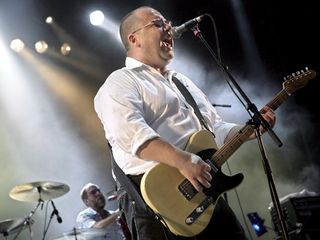
Frank Black
MusicRadar’s gallery of 28 Telecaster legends tips a hat to Leo Fender’s pioneering debut solidbody and the Tele-playing stars who helped to create and nurture the guitar’s iconic status. But what about the unsung heroes who’ve been bearing that Tele-shaped torch without the recognition they deserve?
We asked, you answered, and this is a gallery of the results: the top 13 unsung Telecaster legends as voted for by you. First up: Frank Black…
Pixies frontman and prolific solo artist and producer Frank Black (sometimes known as Black Francis, only known to Wikipedia as Charles Michael Kittridge Thompson IV) is as much an alternative rock icon as he is a Telecaster-wielding legend. Even if he is a reluctant endorsee of the latter: “I ended up at a Tele and it’s probably appropriate but I don’t know if I gave it much thought,” Black told MusicRadar from a darkened tour bus in 2009.
In fact, he only chose a Tele in the first place because “I found a Telecaster for $400… a Japanese-made Fender Telecaster from the early 1980s that had [modified] humbuckers. I tend to play vintage guitars now - I have these piezo pickups that create a faux acoustic sound.”
Regardless, anyone capable of making some of the best albums of all time (and inspiring Kurt Cobain to write Smells Like Teen Spirit in the process) is more than welcome in this list. Even if we do have to drag him in kicking and screaming…
You can listen to MusicRadar's podcast with frank Black here.
Your votes:
"My suggestion would be Frank Black (Pixies)." (Thanks, jfarrar)
"What? No Frank Black? What? Am I missing something? (Thanks, loftandlost)
"There's also Frank Black. Reinvented alt-rock. How he's not in the original list is beyond me." (Thanks, loftandlost)
"Frank Black. His pixies and solo records have Telecasters all over them." (Thanks, jtc720)
Next: Jeff Buckley
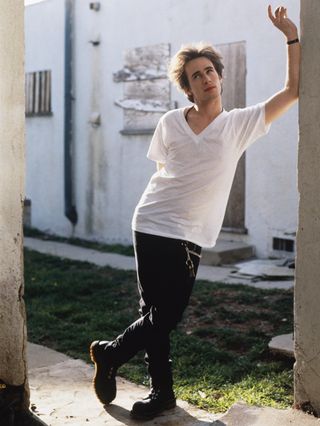
Jeff Buckley
Jeff Buckley was recording demos for his second album, My Sweetheart The Drunk, around the time when he was found dead in the Mississippi River in 1997. Cue worldwide mourning for the loss of a nascent talent, posthumous release overkill (including his spine-tingling cover of Hallelujah) and the story behind the tool of Jeff Buckley’s unmistakable sound and tone: his Fender Telecaster.
Actually, the Blonde 1983 USA top loader Tele wasn’t ‘his’ at all: Buckley borrowed it from a friend, Janine Nicholls, after his valuables were stolen from his LA apartment. However, the guitar was eventually returned to Ms Nicholls following the star's untimely death, where it has remained mostly untouched in its broken case.
Dutch radio producer Botte Jellema is one of a tiny few privileged enough to see it, let alone play it: "I noticed that Jeff had adjusted and tweaked the instrument to perfection, as it played with ease and delight," writes Jellema. "A truly unforgettable experience."
Your votes:
"Already said, but come on, where's Jeff Buckley? This is a man who on 'Live at Sin-e', just had a blonde Tele he'd borrowed off a mate, an amp with a bit of reverb, and a mic, and showed that this is all you need to make fantastic music. A genius." (Thanks, loftandlost)
"The other legendary Tele Player would be the wonderful Jeff Buckley, who before he decided to grace us with his amazing voice, plied his trade as an axeman for hire." (Thanks, ojc)
"Jeff Buckley - witness his version of Strange Fruit." (From Adam via Facebook, thanks)
"How could you not mention Jeff Buckley? He had a fantastic sound, and he penned some fantastic chord/riff driven songs that where imensely influential, and he was as influential in exposing the world to the New York music scene as Nirvana was in exposing the Seattle scene to the world.
"He was a musician's singer/songwriter, going on Terry Gilliam'ish musical trails of thought in the middle of songs, playing jazz, punk, metal, progrock and whatnot before going on with the show, which just shows the eclectic influences that inspired his music.
"Personally, that showed me that the best all-round guitar you can have when you are playing clean sounds is not a Strat but a Tele. And the man could definitely compose AND play. Have you ever tried to play Grace or just tried to figure out the chords? A lot of those Tele heroes you mentioned in your round-up would have a hard [time] playing some of his songs. Not to mention singing the way he did while playing the way he did.
"And Grace is on the very top on the list of most influential records of the 90's: Radiohead's Thom Yorke told Zoo Magazine back in '97 that the whole of OK Computer was inspired by Jeff Buckley. Chris Cornell was a big fan of Jeff Buckley. So are Rufus Wainwright, PJ Harvey, Kashmir and most if not all alternative bands of the noughties." (Thanks, Haffa)
Next: Chrissie Hynde
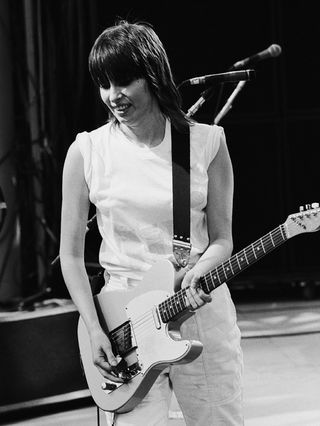
Chrissie Hynde
Few electric guitars are as well-suited to singer-songwriters as the Telecaster. The simplicity of its design, its bright, ringing tones and its all-out chordal punch make it ideally suited for rhythm and riffs. Akron, Ohio-born Chrissie Hynde has played numerous standard US Telecasters over the years and the distinctive jangle of her playing pervades The Pretenders’ extensive back catalogue.
Hynde herself has spoken little of the particular models she has played, telling MusicRadar in 2008: "I don't know anything about guitars, really. A guitar is just a thing, a tool."
Despite this, her blue Tele with mirror scratchplate has been cited as a favourite, while other US Teles in Hynde's arsenal include a white model with white scratchplate, a candy apple red model with white binding and a butterscotch model with black scratchplate. All have rosewood fretboards.
You can read MusicRadar's full Q&A with Chrissie Hynde here.
Your votes:
"And how about Chrissie Hynde?" (Thanks, loftandlost)
"Chrissie Hynde deserves some love from this list." (From Olly via email, thanks)
Next: Mick Green
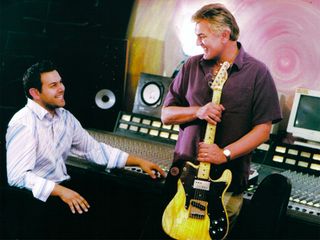
Mick Green
Mick Green came to prominence with Johnny Kidd And The Pirates and in the late '70s and early '80s experienced something of a renaissance. Green’s unique technique was based around a choppy simultaneous rhythm and lead attack, a style which had a colossal influence on Wilko Johnson.
From the '70s onwards, Green played a natural finish Fender Telecaster Custom with black scratchplate. The neck humbucker helped give him his trademark flat, growling sound. In the '80s and '90s he played with Paul McCartney and Peter Green.
Mick Green sadly died in January 2010. As his son Brad noted in a eulogy on his father’s website, “heaven just got a bit louder.”
Your votes:
"We definitely should have Wilko Johnson and Mick Green in the list." (Thanks, pnorman)
"Well, if we're having Wilko Johnson, we should definitely include Mick Green. Unsung hero, no doubt about it." (From Nigel via email, thanks)
Next: Wilko Johnson

Wilko Johnson
Few guitarists have demonstrated the dynamism and aggressive cut of the Telecaster quite as successfully as Wilko Johnson, goggle-eyed stage dervish with electrifying proto-punk R&B outfit Dr Feelgood. Johnson’s hero was the aformentioned Mick Green, and it was Green’s style that inspired Johnson’s attacking staccato, rhythmic style.
Joe Strummer of The Clash was so bowled over by Johnson’s style that he opted for a Tele as his guitar of choice.
Johnson’s trademark guitar is a black '60s Tele with rosewood fretboard and red or black scratchplate - here's a wry clip of Wilko’s guitar being restored by Philippe Dubreuille. Meanwhile, for a glimpse of what made Wilko’s rhythm style truly great, you need look no further than this.
Your votes:
"What? No Wilko Johnson..." (Thanks, Fretwired)
"Wilko Johnson." (Thanks, bbcoz)
"We definitely should have Wilko Johnson and Mick Green in the list." (Thanks, pnorman)
Next: Gilby Clarke
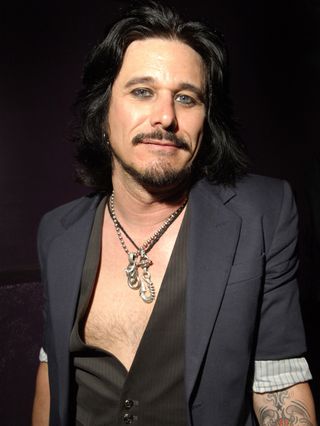
Gilby Clarke
Let’s be absolutely frank here, Telecasters are not the first guitar you’d associate with rock or metal outfits. But during his three-year tenure with Guns N’ Roses from 1991-94, Gilby Clarke frequently played Teles. The man he replaced, Izzy Stradlin, was also an occasional Tele user, and he can be seen sporting an ESP copy with a Floyd and humbuckers in the Sweet Child O’ Mine video.
Clarke’s models over the years have included a late-'90s ESP Vintage Plus Tele. This mid-set duet with Slash on Wild Horses is a beaut.
Your votes:
"...and maybe Gilby Clarke." (Thanks, Gallagher)
"Gilby Clarke. GN'R have had their fair share of guitarists over the years and Clarke was as good a legend as many of 'em. And he often played Teles, of course." (From Michael via email, thanks)
Next: Chris Walla and Ben Gibbard
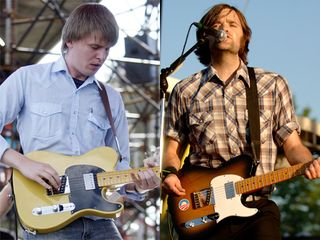
Chris Walla and Ben Gibbard
Telecasters abound within the ranks of American indie heroes Death Cab For Cutie. Lead vocalist Ben Gibbard’s guitar collection boasts both brown and black '70s Thinlines and several G&L copies, although he’s not been averse to hurling Telecasters across the stage in the past.
No such petulance from guitarist and producer Chris Walla. His list of gear includes a 2001 US ’52 reissue Tele with a Harmonic Design Z90 pickup in the bridge. Walla’s “favourite guitar for years” is a Mexican Tele that he bought new in 1993. “It has a very particular 'thing' about it,” Walla says. “Lots of mids, not a lot of sustain. It's not really a very nice piece of wood, but it's mine and I love it.”
You can listen to MusicRadar's podcast with Chris Walla here.
Your votes:
"Ben Gibbard and Chris Walla from Death Cab For Cutie both use Telecasters fairly exclusively. Ok so Ben uses G&L but its the same thing! Listen to Transatlanticism - some incredible sounds, all produced through Telecasters." (Thanks, jameshalliday89)
"DCFC - both guitarists use Teles regularly. Amazing band." (From Chris via email, thanks)
Next: Bill Frisell
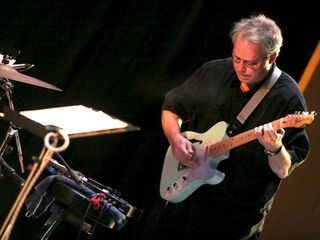
Bill Frisell
Although generally classed as a jazz player, guitarist and composer Bill Frisell has continued to span a range of genres throughout his career, having played sessions with the likes of Elvis Costello, Norah Jones, Burt Bacharach, Ginger Baker and Elvin Jones.
Frisell is known for using Telecasters through an array of effects including delay, distortion, reverb and octavers, to create idiosyncratic sounds from his instrument. Unsurprisingly, he has a range of Telecasters in his collection .
“My main one is a Mexican one,” he told Fender recently. “It was like $500 and it’s great. For the last seven or eight years I’ve mostly been playing Telecasters. I also have a Custom Shop Relic Telecaster that I’ve been playing for the last year or so. I shaved the neck down. I have a ’74 Tele and a ’66 Tele as well. They’re so simple, everything just works, and so versatile. I can get just about everything I want out of it.”
Your votes:
"Bill Frisell." (Thanks, bbcoz)
"Bill Frisell highlights how versatile the Telecaster is - from country twang to overdriven jazz fusion and delay infused ambient loops." (Thanks, Fretwired)
"Bill Frisell." (Thanks, colski)
"Bill Frisell." (Thanks, ZombyWoof)
"Never miss out Bill Frisell." (From Hollosy via Facebook, thanks)
Next: John Jorgenson

John Jorgenson
US guitarist Jorgenson has recorded and toured with a wealth of stellar name artists, including Elton John, The Byrds, Bob Dylan, Willy Nelson, Johnny Cash, Emmylou Harris, Barbra Streisand and Luciano Pavarotti. He first came to prominence with the Desert Rose Band in the mid-'80s.
Telecasters played a significant role in Jorgenson’s guitar collection over the years. Fender honoured him in 1998 with a signature model, the Fender John Jorgenson Signature Custom Korina Telecaster.
As the title suggests, this model featured a solid Korina body as well as a maple neck with pearloid dot inlays and dual side-by-side humbucking pickups. It also featured a modified vintage-style Tele bridge and a custom five-way pickup switching system. Jorgenson’s live work and a recent discussion of his technique provides a good overview of why he opts for the Tele.
Your votes:
"John Jorgenson." (Thanks, bbcoz)
"John Jorgenson had a signature Tele - if Fender think he's worth it..." (From David via email, thanks)
Next: Richie Kotzen
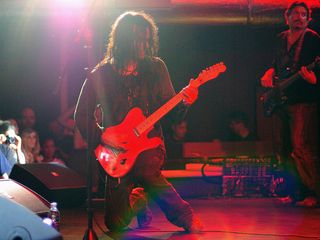
Richie Kotzen
Guitarist and singer-songwriter Kotzen came to prominence in 1991 when he joined the rock band Poison, co-writing and playing on their album Native Tongue. By the end of the decade, Kotzen had joined Mr Big and has since collaborated with rock, jazz and fusion artists such as Stanley Clarke.
Kotzen has used Telecasters throughout his career, most notably a Fender signature model. This guitar features an ash body, laminated flame maple caps and a one piece maple neck with abalone dot inlays and 22 super jumbo frets. It also features a DiMarzio Chopper T pickup in the bridge position and a DiMarzio Twang King in the neck position.
Kotzen’s outstanding playing is in evidence on this groove-laden rendiition of The Faces’ (I Know I’m Losing You).
Your votes:
"Richie Kotzen. Look beyond the REH-era shred shtick and you'll find a sublime player with uber-fusion chops, a bluesy sensibility and a voice to make the best soul singers out there shake. A different class." (Thanks, LordOfTheStance)
"Richie Kotzen - amazing player." (From Joe via email, thanks)
Next: Brent Mason
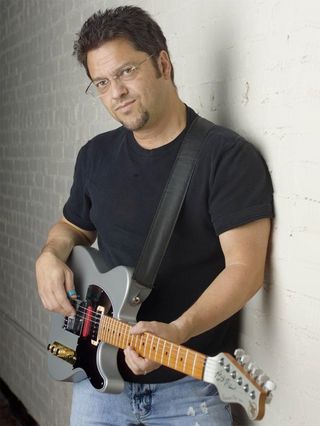
Brent Mason
US session guitarist and songwriter Mason is best known for his work in country music. Discovered by Chet Atkins, he went on to play with artists such as George Strait, Alan Jackson, Shania Twain and Neil Diamond.
Mason owns numerous guitars but frequently plays a Joe Glaser-modified 1968 Fender Telecaster that has featured on countless sessions for the last 15 years. Glaser and Mason have since collaborated on the Valley Arts Brent Mason Signature Custom Pro.
This distinctive Tele features an old Gibson mini-humbucker as the front pickup, a Seymour Duncan Hot Strat Stack as the middle pickup and a Duncan Vintage Tele Stack at the back. One unique modification is the blend control. In the back position this enables you to dial in however much of the middle pickup you want.
Watching Mason put the guitar through its paces, it’s abundantly clear why he is a first-call guitarist on the Nashville scene, and a shoo-in for this list.
Your votes:
"John 5? And no Brent Mason? What are you people smoking?" (Thanks, wrriggin)
"Brent Mason." (Thanks, ZombyWoof)
"No Brent Mason? for shame!" (From Sam via Facebook, thanks)
Next: Robyn Hitchcock
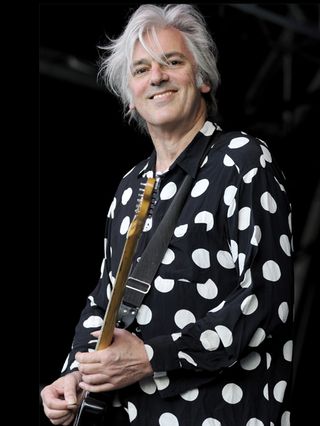
Robyn Hitchcock
Flawless songwriting sensibilities and a wonderfully twisted wit are defining factors in the career of foppish English singer-songwriter Robyn Hitchcock. After coming to prominence with Cambridge band The Soft Boys in the early '80s, Hitchcock embarked on a prolific - if occasionally misfiring - musical trajectory, releasing wonderfully perceptive and innovative albums, such as I Often Dream Of Trains.
In recent years, he has recorded and toured regularly with REM's Peter Buck, Scott McCaughey and Bill Reiflin under the moniker Robyn Hitchcock And The Venus 3.
He is also a nifty guitarist and rather fond of the Fender Telecaster, as recently revealed on the Fender website. “The Telecaster chose itself for me as my favourite electric guitar, because so many of my favourite guitar riffs were played on it… It turned out all these great explosions came from Telecasters. So I bought one in 1979 and have seldom played any other electric since."
"That chunky, slightly edible look - as if a bite has been taken out of the front of the guitar - is mirrored in the sound of the instrument. Ideal for rhythm/lead, à la Mick Green of The Pirates and Wilko Johnson.”
Your votes:
"Robyn Hitchcock." (Thanks, Fretwired)
"I think Robyn Hitchcock should get in your list of unsung legends." (From Peter via email, thanks)
Next: Jeff Baxter
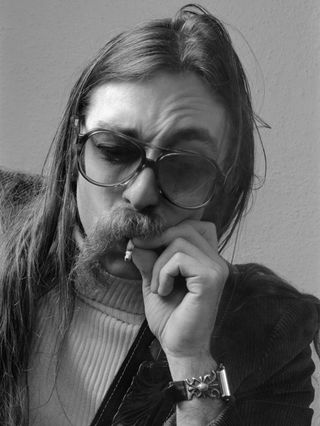
Jeff Baxter
Jeff ‘Skunk’ Baxter is best known for being guitarist in Steely Dan and The Doobie Brothers, although recently - and certainly more notoriously - he has been working as a US defence consultant, chairing a Congressional Advisory Board on missile defence.
Whether Fender Telecasters ever enter the mind of Skunk these days is uncertain although it was certainly his instrument of choice in his pre-theatre of war existence. He once worked as a guitar repairman and was known as a major tweaker of his own instruments.
One upshot of this was ‘Skunk-a-sonic’ Teles, handwound and configured for his own particular sonic tastes. Other refinements included removing all the factory frets and re-radiusing the fretboard from its standard 7.25” to a flatter radius, and then refretting with larger wire. Here is the Skunk, rocking out on Reelin’ In The Years with Steely Dan in 1978.
Liked this? Now read: 16 Rickenbacker guitar and bass stars
Connect with MusicRadar: via Twitter, Facebook and YouTube
Get MusicRadar straight to your inbox: Sign up for the free weekly newsletter

MusicRadar is the number one website for music-makers of all kinds, be they guitarists, drummers, keyboard players, DJs or producers...
- GEAR: We help musicians find the best gear with top-ranking gear round-ups and high-quality, authoritative reviews by a wide team of highly experienced experts.
- TIPS: We also provide tuition, from bite-sized tips to advanced work-outs and guidance from recognised musicians and stars.
- STARS: We talk to musicians and stars about their creative processes, and the nuts and bolts of their gear and technique. We give fans an insight into the craft of music-making that no other music website can.

“He sings on all our stuff. You hear him on AC/DC, Bryan Adams, Shania’s stuff. He has the best voice in the room”: Phil Collen says Mutt Lange is an ace vocalist who can nail it in one take – and it’s the same with guitar

“That's when the phone lines all over the world collapsed… The moment came when people fully understood what this was for”: The creation of The Cars’ song Drive and how it soundtracked a humanitarian catastrophe

“He sings on all our stuff. You hear him on AC/DC, Bryan Adams, Shania’s stuff. He has the best voice in the room”: Phil Collen says Mutt Lange is an ace vocalist who can nail it in one take – and it’s the same with guitar

“That's when the phone lines all over the world collapsed… The moment came when people fully understood what this was for”: The creation of The Cars’ song Drive and how it soundtracked a humanitarian catastrophe
Most Popular








